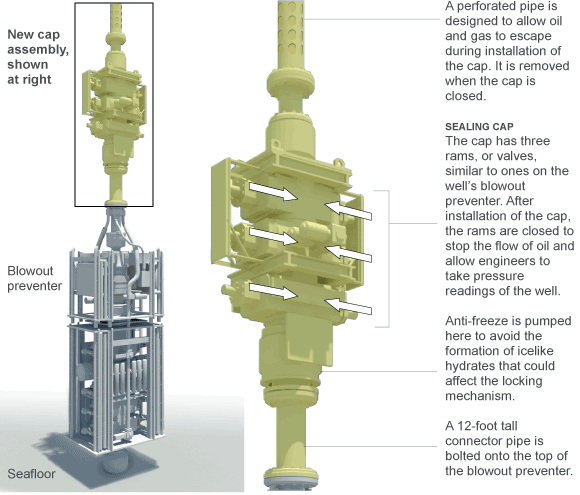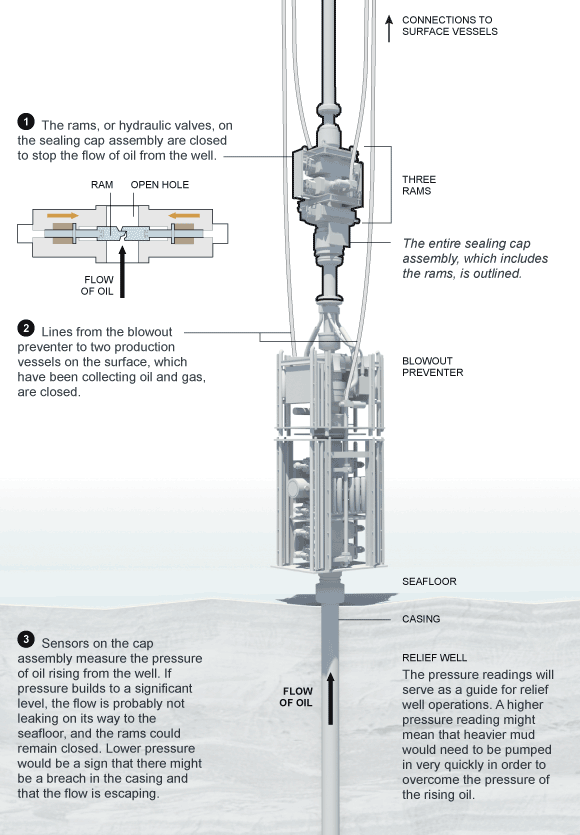Capping Stack

By late June, BP was well on its way toward deploying a "capping stack," which, once installed on top of the blowout preventer, would enable BP to shut in the well. The capping stack was essentially a smaller version of a blow-out preventer, similarly designed to stop the flow of oil and gas. BP had internally discussed installing a tight-sealing cap within a week of the blowout, but following the top kill, had shelved this approach, in part because of concerns about well integrity and the potential for an underground blowout. The government and BP had to take these concerns into account when planning for use of the capping stack.
In early July, as analysis of these risks continued, Admiral Thad Allen authorized BP to install the capping stack, but not to close it. BP next prepared to temporarily close the capping stack in a planned "well integrity test," to determine whether the well had been compromised and oil could flow into the rock formation. This test was delayed as officials wrestled with the potential risks involved. In the most extreme scenario, one industry expert suggested that an underground blowout could cause the sands around the wellhead to liquefy and the entire BOP to disappear into the sea floor
JULY 10 | A Better Cap

After consulting with scientists in and out of government, BP and the government opted for a "go slow" approach, with continual monitoring of the wellhead pressure. BP shut the stack and began the well integrity test on July 15. For the first time in 87 days, no oil flowed into the Gulf of Mexico. Initial wellhead pressure readings were an uncertain middle range that one senior administration official termed "purgatory," and rising slowly. Keeping the capping stack shut could cause an underground blowout and, in the worst case, loss of a significant portion of the 110-million-barrel reservoir into the Gulf. The government decisionmakers recognized that the public wanted the well plugged and the flow of oil into the Gulf stopped, but the risk of causing greater harm was real.
JULY 15 | Testing to See if the Well Is Intact

At his July 24 press briefing, Admiral Allen stated what was by then plain: "our confidence [in the capping stack] is increasing and we have better integrity in the well than we may have guessed."
